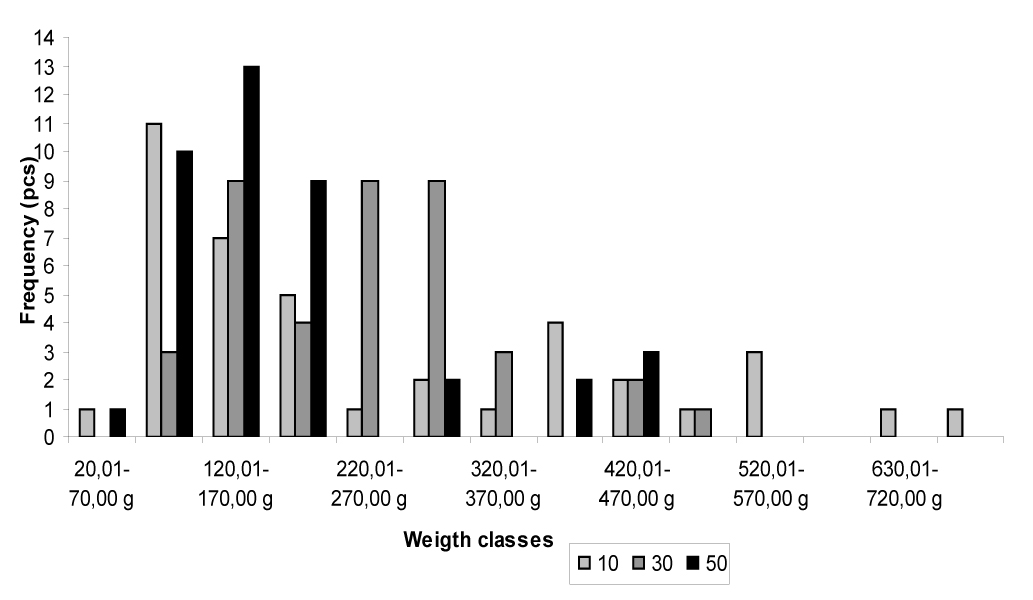Analysis of the aboveground and roots biomass of redroot pigweed (Amaranthus retroflexus L.) depending on plant density
Abstract
The experiment aimed at comparison of the fresh and dry biomass of aboveground parts and roots of redroot pigweed (Amaranthus retroflexus L.) depending on plant density. A micro-plot (1m2 plots) experiment was set up in 2012 at the experimental station Totem Field at UBC, Vancouver, Canada, as a randomized block design with four replications per treatment. Three different densities of redroot pigweed were studied: 10, 30 and 50 pcs per 1 m2. Seeds were sown in two terms: I – 18th July and II – 6th August. Plants sown in the I term were of higher biomass and more diversed whereas plants sown in the II term developed smaller amounts of aboveground and root biomass. We conclude that in the later term of emergence root competition and seed production play more important role than aboveground competition.
References
Costea M., Weaver S., Tardif F.J. 2004. The biology of Canadian weeds. 130. Amaranthus retroflexus L., A. powellii S. Watson and A. hybridus L. Can. J. Plant Sci. 84: 631–668.
Martin M.P.L.D., Field R.J. 1988. Influence of time of emergence of wild oat on competition with wheat. Weed Res. 28 (2): 111–116.
Mowszowicz J. 1986. Krajowe chwasty polne i ogrodowe. Wyd. II. PWRiL, Warszawa.
Nagashima H. 1999. The processes of height-rank determination among individuals and neighborhood effects in Chenopodium album L. stands. Ann. Bot. 83: 501–507.
Wang T., Zhou D., Wang P., Zhang H. 2006. Size-dependent reproductive effort in Amaranthus retroflexus: the influence of planting density and sowing date. Can. J. Bot. 84: 485–492.
Weaver S.E. 1984. Differential growth and competitive ability of Amaranthus retroflexus, A. powellii and A. hybridus. Can. J. Plant Sci. 64: 715–724.
Weaver S.E., McWilliams E.L. 1980. The biology of Canadian weeds. 44. Amaranthus retroflexus L., A. powellii S. Wats. and A. hybridus L. Can. J. Plant Sci. 60: 1215–1234.


This work is licensed under a Creative Commons Attribution-NonCommercial-NoDerivatives 4.0 International License.
The journal is licensed by Creative Commons under BY-NC-ND license. You are welcome and free to share (copy and redistribute the material in any medium or format) all the published materials. You may not use the material for commercial purposes. You must give appropriate credit to all published materials.
The journal allow the author(s) to hold the copyrights and to retain publishing rights without any restrictions. This is also indicated at the bottom of each article.





